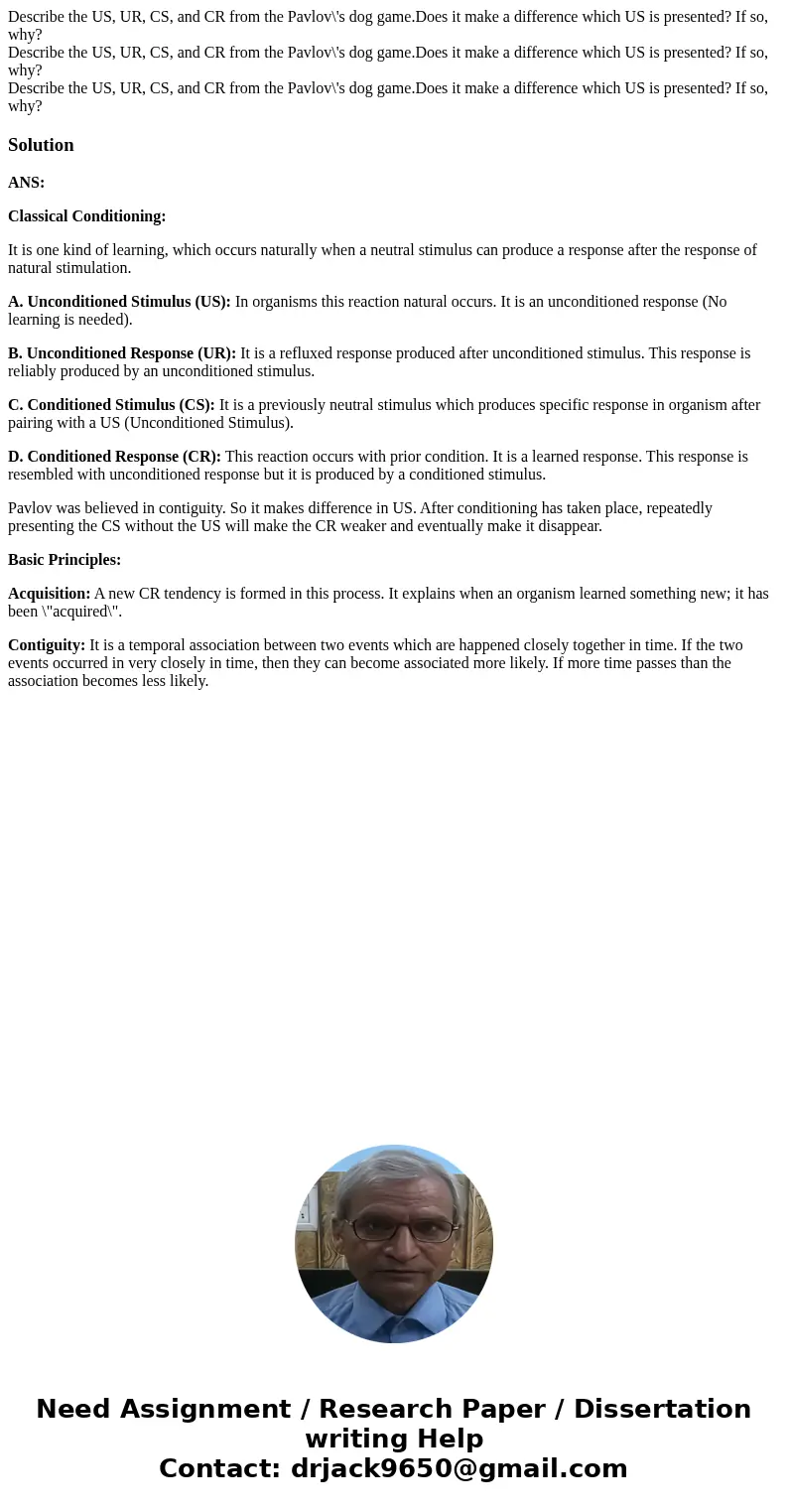Describe the US UR CS and CR from the Pavlovs dog gameDoes i
Solution
ANS:
Classical Conditioning:
It is one kind of learning, which occurs naturally when a neutral stimulus can produce a response after the response of natural stimulation.
A. Unconditioned Stimulus (US): In organisms this reaction natural occurs. It is an unconditioned response (No learning is needed).
B. Unconditioned Response (UR): It is a refluxed response produced after unconditioned stimulus. This response is reliably produced by an unconditioned stimulus.
C. Conditioned Stimulus (CS): It is a previously neutral stimulus which produces specific response in organism after pairing with a US (Unconditioned Stimulus).
D. Conditioned Response (CR): This reaction occurs with prior condition. It is a learned response. This response is resembled with unconditioned response but it is produced by a conditioned stimulus.
Pavlov was believed in contiguity. So it makes difference in US. After conditioning has taken place, repeatedly presenting the CS without the US will make the CR weaker and eventually make it disappear.
Basic Principles:
Acquisition: A new CR tendency is formed in this process. It explains when an organism learned something new; it has been \"acquired\".
Contiguity: It is a temporal association between two events which are happened closely together in time. If the two events occurred in very closely in time, then they can become associated more likely. If more time passes than the association becomes less likely.

 Homework Sourse
Homework Sourse